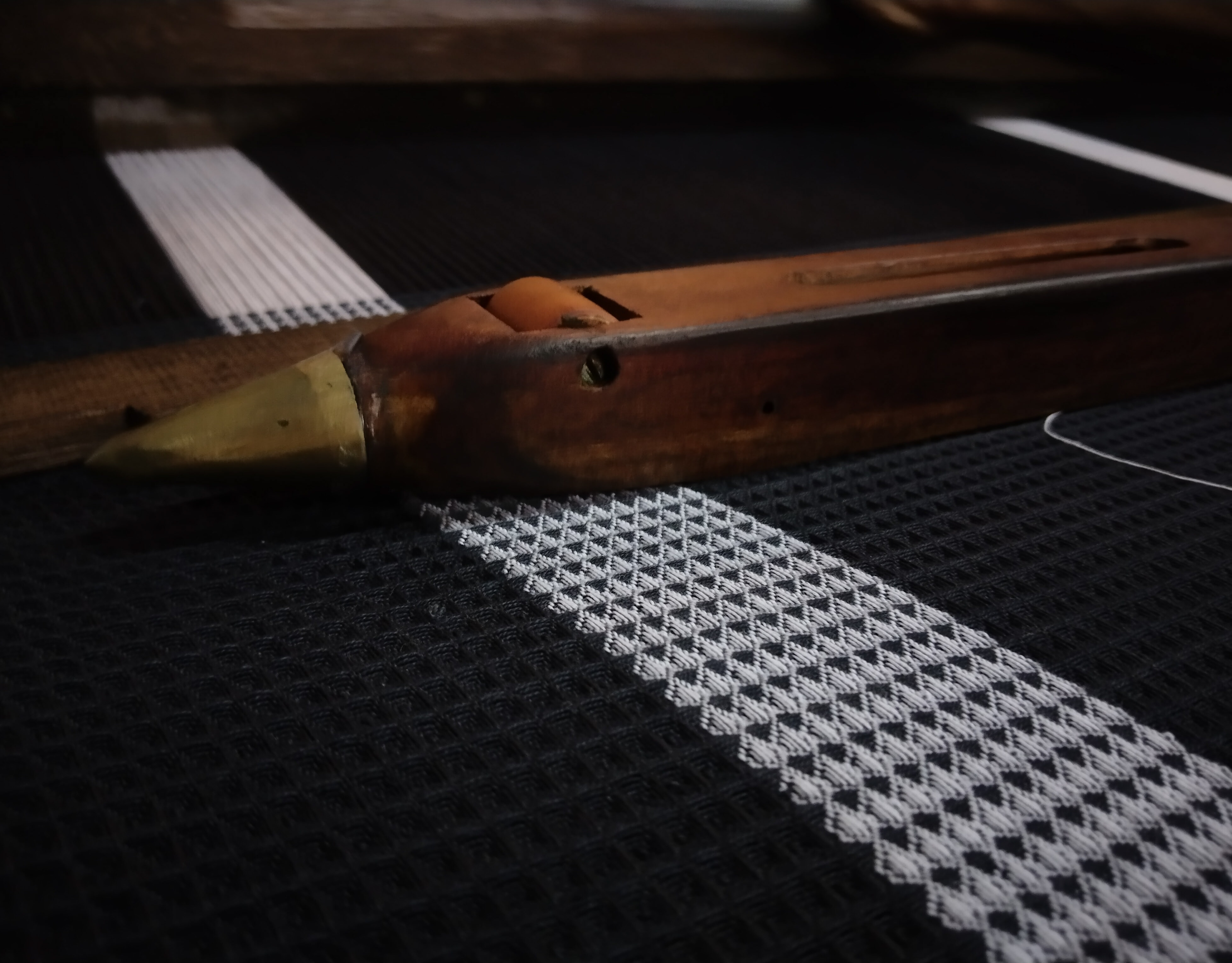


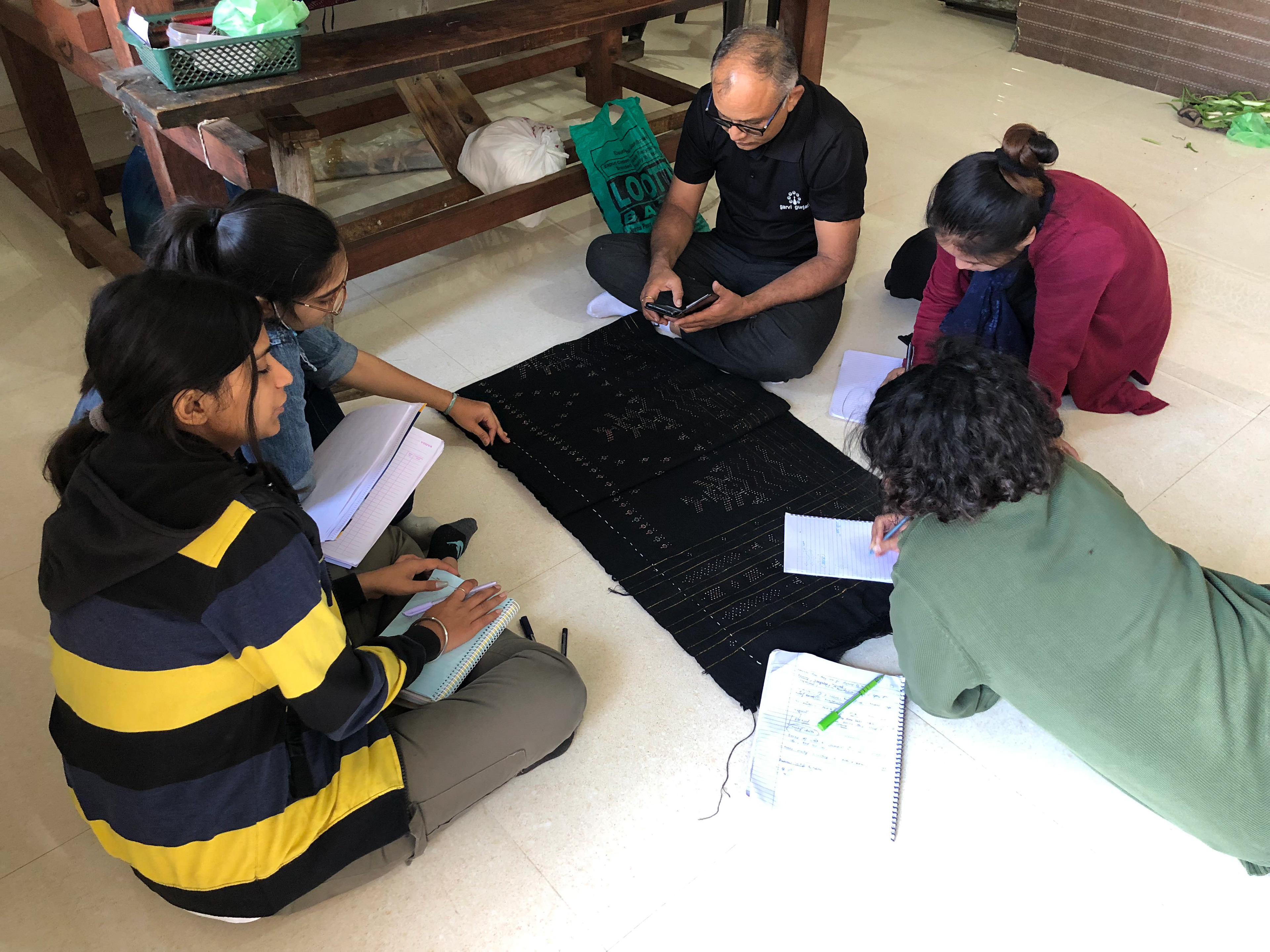
BRIEF
As part of the Master’s program at NIFT Gandhinagar, a team of six conducted an in-depth research and documentation project on Tangaliya weaving, a traditional craft practised in the village of Surendranagar, Gujarat, the study involved engaging with the families of weavers to understand the craft's origins, techniques, processes, and the cultural and social ecosystem surrounding it.
Group members: Akshaya Manoj, Mahima Sinha, Mansi Ahuja, Neha Yadav, Ramengmawii, Sunny Yadav.
The research highlighted the historical journey of Tangaliya weaving and its present state, focusing on the people, beliefs, and community practices that sustain the craft. A key outcome of this project was the development of a strategic plan aimed at empowering women within the community. By leveraging existing self-help group policies, the strategy encouraged women to participate in commercial activities, bringing them to the forefront of the craft's ecosystem.
This initiative sought to not only uplift women but also foster holistic growth for the Tangaliya weaving community by promoting sustainable development and greater inclusivity.
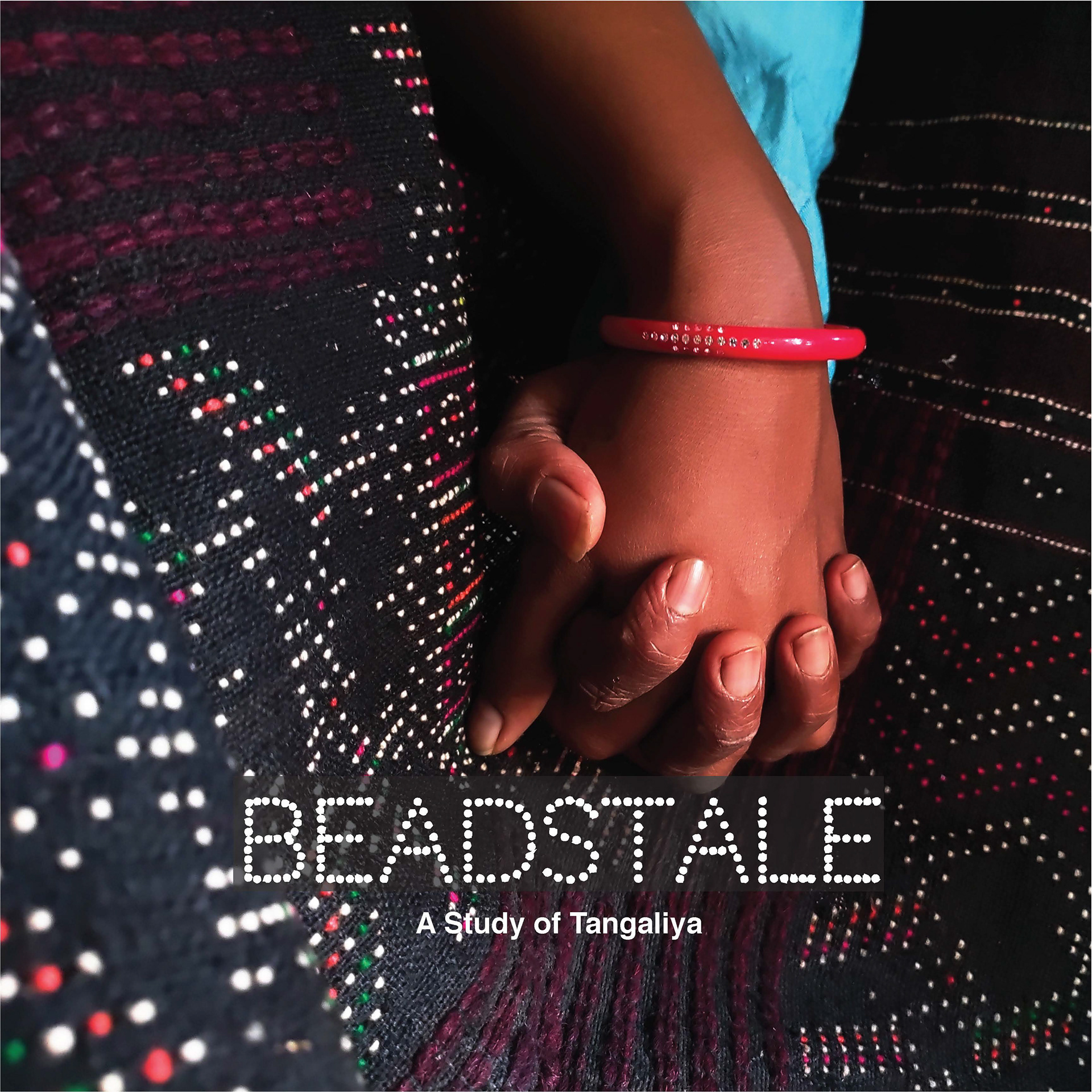

Aim
To analyze the elements integral to the Tangaliya craft and the factors causing production constraints for Tangaliya craftsmen.
To analyze the elements integral to the Tangaliya craft and the factors causing production constraints for Tangaliya craftsmen.
Objectives
• Using flow diagrams to document a sequence of events, illustrate the actions or processes of multiple actions in a system, explain a process, or show
cause and effect of interrelated elements to explore the historical perspective of craft and its evolution.
• To understand people and document their experiences from the personal stories through directed storytelling.
• To gain a solid knowledge base of the design territory and existing artifacts from exploratory research.
• To understand the role of each craftsperson and the family/community by observing activities, Environments, Interactions, Objects, and Users i.e., AEIOU framework.
• Using flow diagrams to document a sequence of events, illustrate the actions or processes of multiple actions in a system, explain a process, or show
cause and effect of interrelated elements to explore the historical perspective of craft and its evolution.
• To understand people and document their experiences from the personal stories through directed storytelling.
• To gain a solid knowledge base of the design territory and existing artifacts from exploratory research.
• To understand the role of each craftsperson and the family/community by observing activities, Environments, Interactions, Objects, and Users i.e., AEIOU framework.
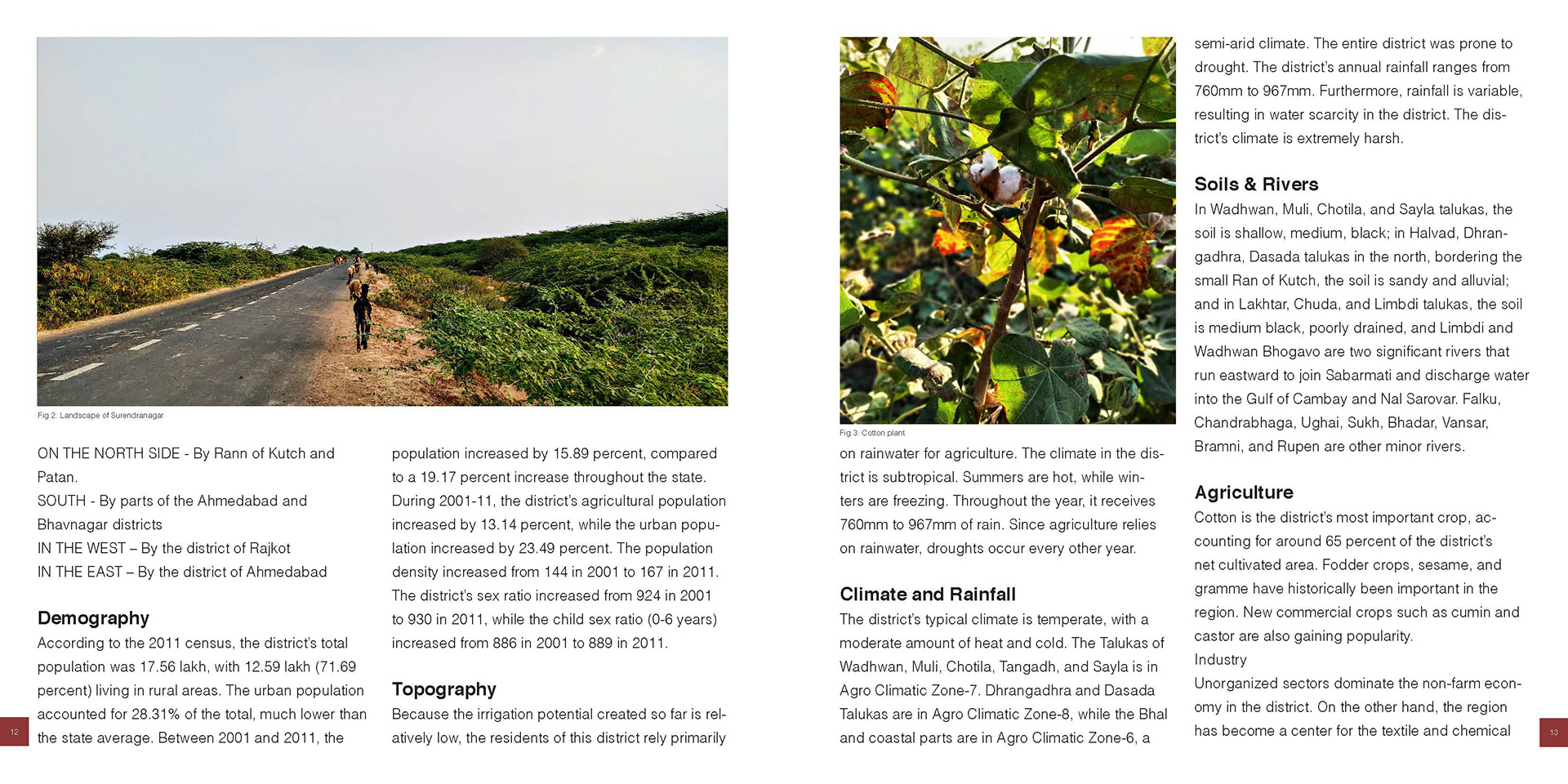
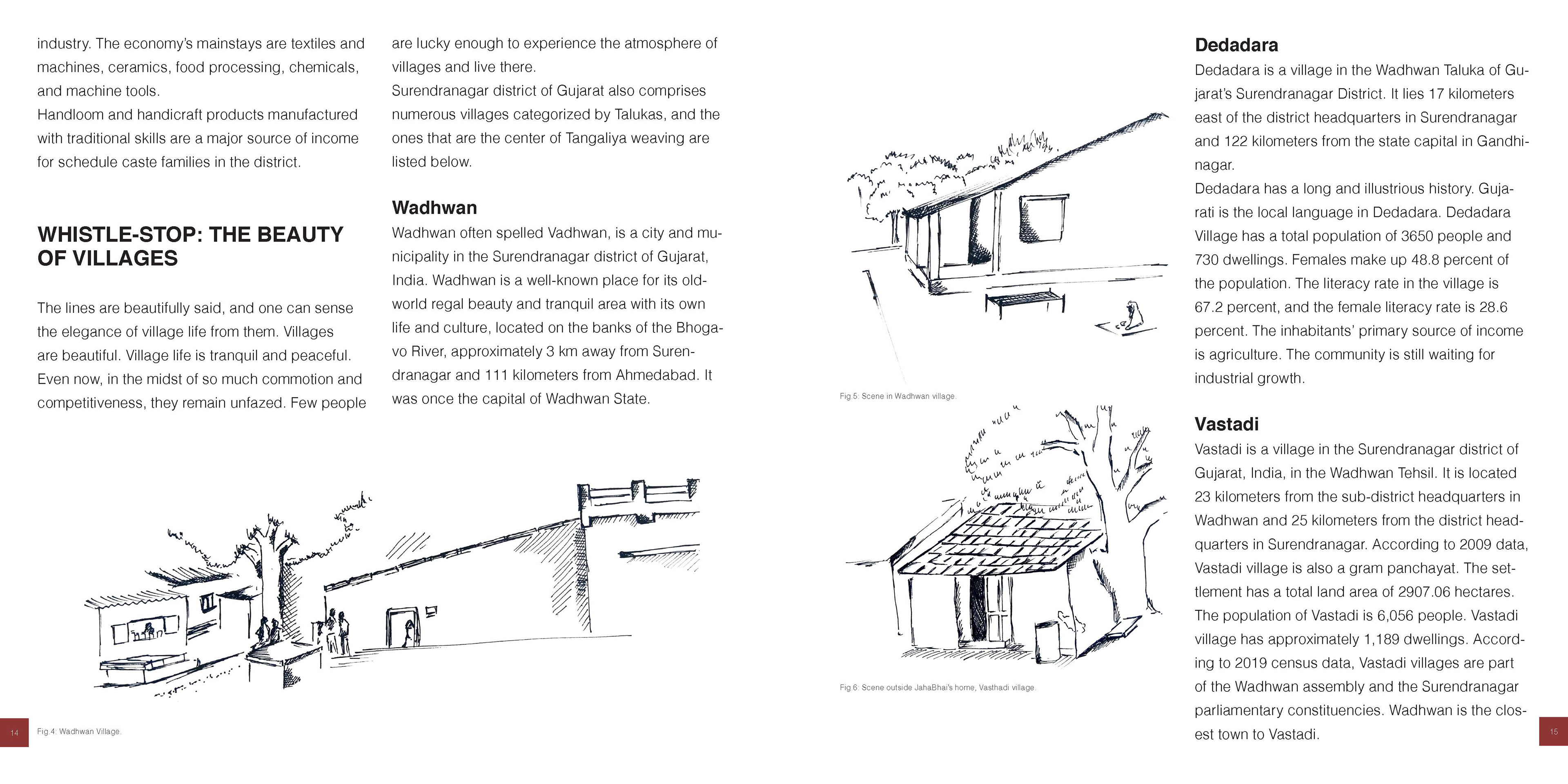
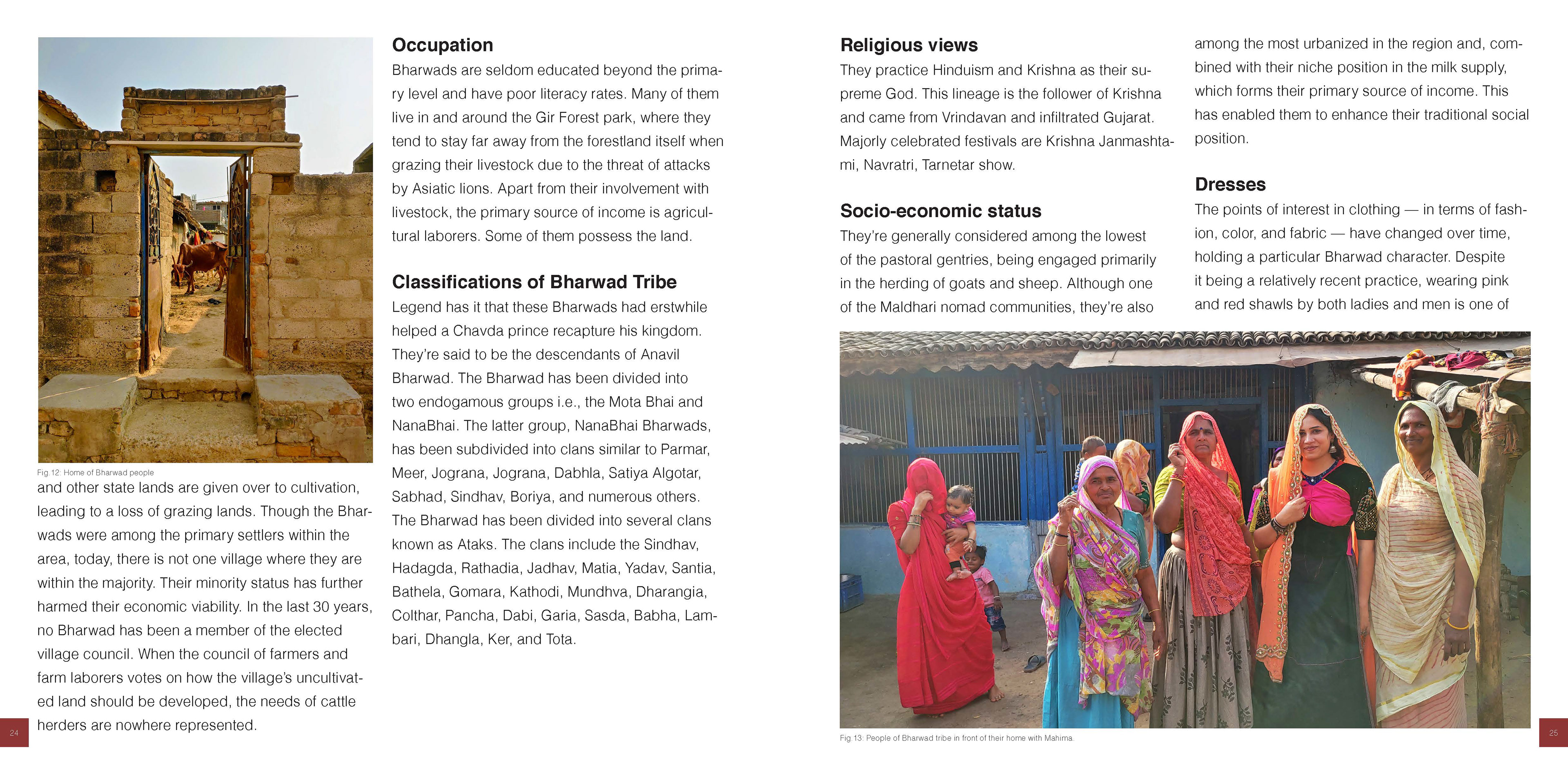

FINDINGS
Industrialization has replaced traditional rural production, prioritizing cost and quantity over craftsmanship, leading to declining livelihoods for artisans. However, craft preserves history, culture, and values, offering uniqueness that machines cannot replicate.
Field research, interviews, and discussions with artisans revealed systemic challenges in the Tangaliya craft, affecting raw material sourcing, dyeing knowledge, health issues, technical loom problems, marketing struggles, and design protection. These interconnected issues hinder efficiency and growth.
The craft operates within a complex system where one issue affects the entire chain. While artisans produce exceptional work, they face limitations in scaling due to resource constraints. The key lies in understanding and balancing this system to ensure the craft's long-term survival and success.
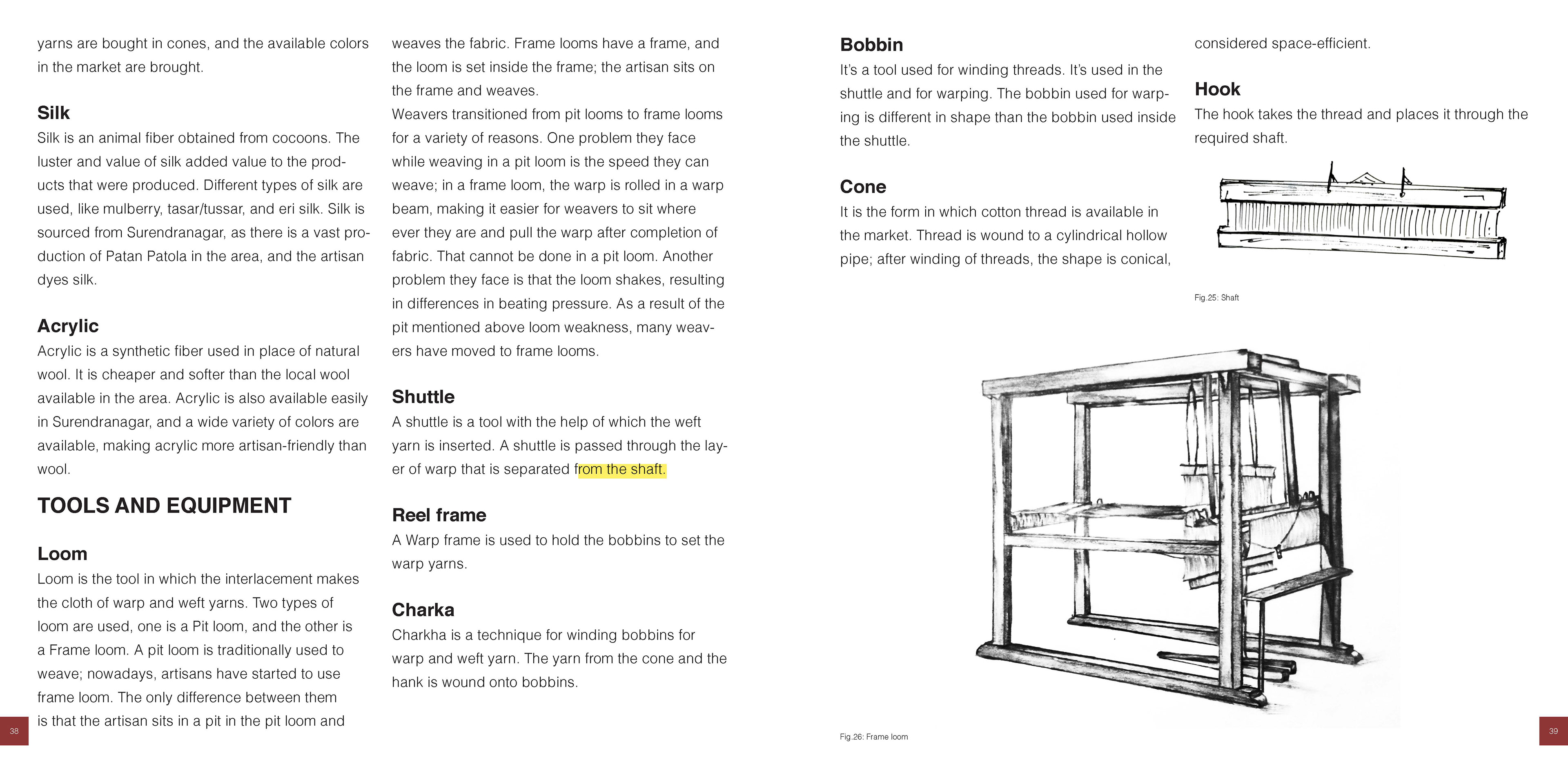
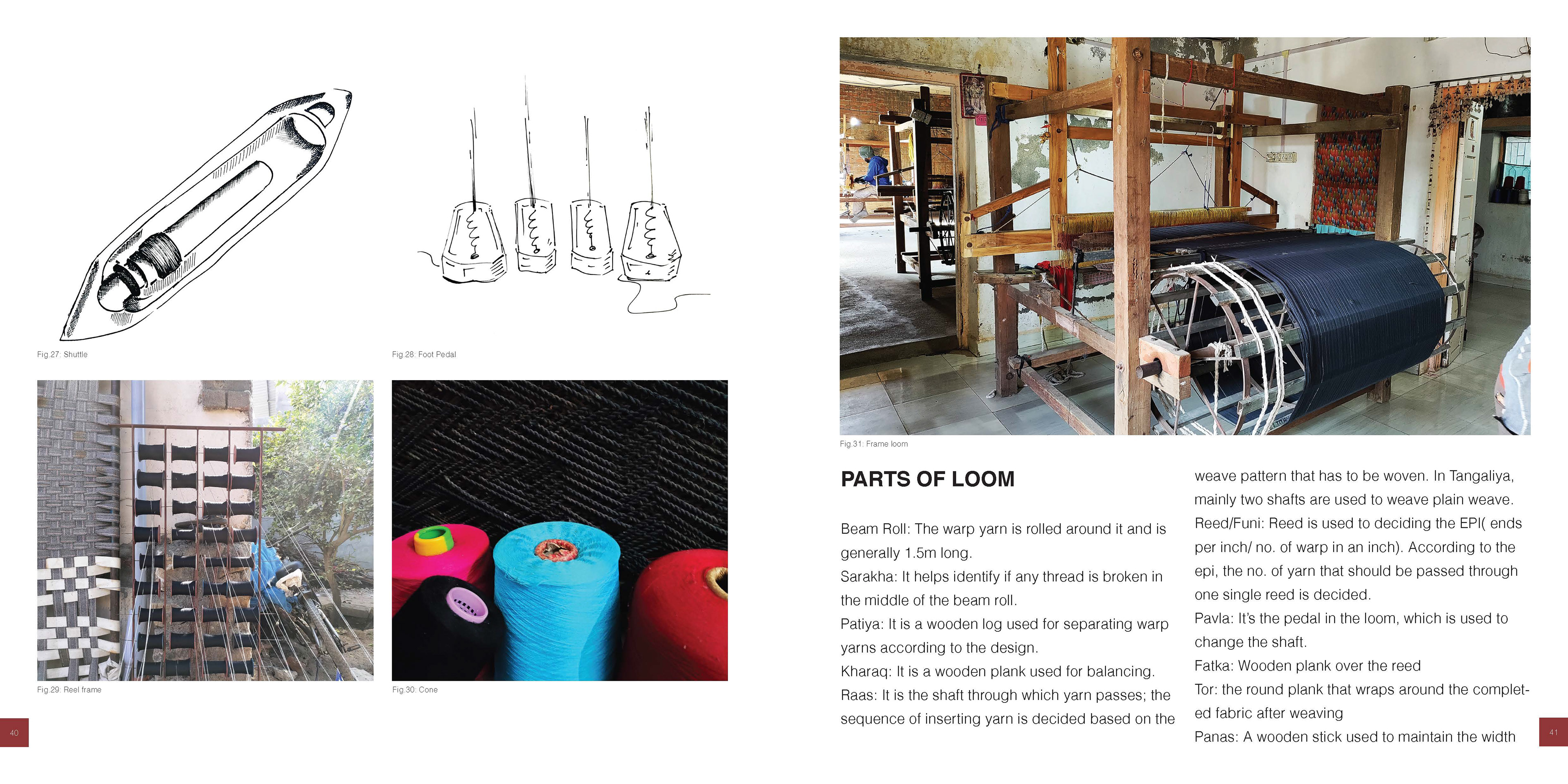


CONCLUSION
This study highlights the significance of Tangaliya craft in artisans' lives, revealing its deep-rooted meaning and potential. Despite challenges, the craft holds promise once its hurdles are addressed.
Through analysis, we found that the issue lies not in artisans’ skills but in production constraints limiting efficiency. Our research answered key questions while uncovering deeper insights.
Moving forward, we aim to address these challenges, ensuring that this rich cultural heritage thrives and does not fade with time. Collective efforts are essential to support artisans and preserve this traditional craft.
Browse Portfolio:
